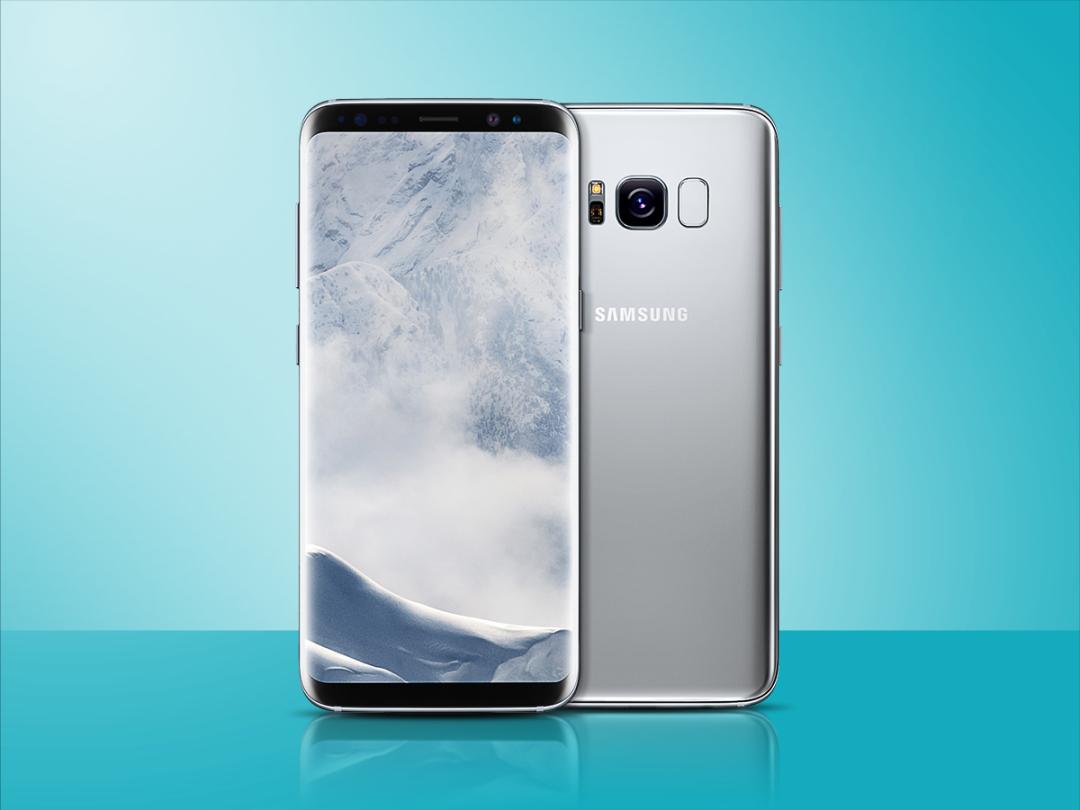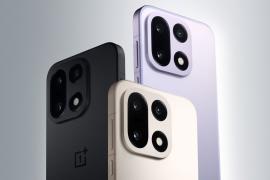The first 13 things you should do with your Samsung Galaxy S8 and S8 Plus
Just scored the best Samsung phone there's ever been? Then you'll need these tips and tricks to get the best from it

Samsung has absolutely flattened the competition with the Galaxy S8 and Galaxy S8 Plus – they are, hands down, two of the best-looking and most lust-worthy smartphones ever.
Both run Android 7.0 Nougat, with the latest edition of Samsung’s TouchWiz UI on top of it. This is the most minimal, most user-friendly version of Touchwiz we’ve ever used, but it can still be a little confusing to first-time Samsung owners and long-time Galaxy fans alike.
TouchWiz is overflowing with features, hidden options and multiple ways of getting things done, so knowing how to dig down and uncover the juicy bits is crucial for getting the best out of your new handset. We’ll show you how to do ’em all, right here.
1) Rearrange the on-screen buttons
So the Galaxy S8’s eye-catching curves convinced you to make the switch to Samsung after years of using another brand. It can be a little tricky to adjust, especially because Samsung insists on putting the on-screen Back and Recents keys the wrong way round (if you’ve used any other Android phone, that is).
Thankfully, you can now flip them back to the way you remember. Just head to the Settings app, tap Display, and then tap Navigation Bar. Tap Button layout and you can reverse the layout to something a little more familiar.
You can adjust the sensitivity of the digital home button here, too – or change the navigation bar’s background colour to suit whatever wallpaper you’re using.
2) Pick your app drawer preference
Android owners will feel right at home with Samsung’s app drawer, which neatly hides and organises all your installed apps and keeps your homescreens free for widgets.
How you open it is up to you, though: either with a familiar drawer icon in the bottom row of homescreen icons, or with a simple swipe up or down anywhere onscreen. Both options are in Display -> Home Screen. Tap on Apps Button and choose the one that best suits you.
Apple owners might not want an app drawer at all, and that’s fine: head to Display -> Home Screen and tap Home Screen Layout. Now you can ditch the drawer altogether for multiple home screens filled with apps, in the order you choose.
3) Search for anything on your phone
By the time you’ve filled your phone with apps and games, it can be tricky to remember where you left all your icons – especially if you chuck them into folders and rarely use them.
The search bar built into the app drawer can help you out, though. Just swipe down anywhere onscreen, or tap the app drawer icon if you’ve got it enabled, then tap on "Search phone" at the top of the screen. This’ll search through any installed apps, as well as calendar appointments, SMS messages, and Settings pages, which should help you get to where you want to be that little bit quicker than doing everything manually.
4) Secure your phone with fingerprints, iris scanning or facial recognition
You’ve got plenty of choice when it comes to keeping the Galaxy S8 safe: fingerprint scanning, facial recognition, and iris scanning, on top of the usual onscreen passwords, PINs and patterns. You could just opt for one of these, but we’ve found that a combination is much more convenient.
Add a password by going to Settings -> Lockscreen and Security, and registering your face, fingerprint and iris. Each one has its own sub-menu on this screen. You’ll also need to set a PIN, password or pattern before you can use biometrics, and you can only use one of either facial or iris scanning at once.
With a registered fingerprint, onscreen password and either iris or facial scanning enabled, you’ll have three ways to quickly unlock your phone.
5) Sleep better by turning on the Blue light filter
We all like to use our phones in bed, catching up on the day’s news, or simply scrolling through Facebook, but it could be impacting your sleep. The blue light pumped out by the screen can trick your brain into feeling more alert and awake, when you should be resting.
Samsung’s got an easy fix, though, in the form of a ‘Blue Light filter’. You can turn this on manually, either by going to Display -> Blue Light Filter in the Settings app, or by pulling down the notification tray and turning it on there instead. This strips out the blue light, leaving your screen looking warmer and yellower, but without confuddling your brain while you’re glued to the phone at night.
Even better, you can set it to a schedule; either set one up manually, or leave it on automatically between sunset and sunrise. Both options are in the Blue Light Filter screen in the Display page of the Settings screen.
6) Set up edge panels
These handy shortcuts pop out from the edge of the curved screen – hence the name. There are plenty to choose from, including app shortcuts, phonebook contacts, the always-handy Smart Select panel, a Clipboard showing all the text and images you’ve copied recently, weather, quick tools, a calendar, sports, finance, news and other reminders. Basically, there’s masses of them.
Only a few are turned on by default, though, and the handle that you have to swipe to open up the edge panels might not be in the best place for your fingers. To change it, go to Settings -> Display -> Edge Screen and tap on Edge Panels.
From here, you can toggle on different panels, or tap the three dots in the top right and select Handle Settings to move the location of the trigger, make it bigger, or turn it transparent so it doesn’t get in the way of your apps.
7) Set up always-on display
The S8’s AMOLED screen only uses juice to power the pixels that are lit up – not the whole panel. That’s why you should enable the Always-on display: it’ll barely drain any battery, but will save you from constantly turning the screen on just to check the time or see what notifications have just come through.
Head to Settings -> Lock Screen & Security and tap Always On Display. You can turn it on at the top, pick which content to show (the digital home button, the clock, or both), and pick a style. If you don’t need a clock, you could swap it for a calendar or a picture.
You can also set Always On Display to run on a schedule here, so it’s not keeping you up at night (or using battery when you don’t want it to).
8) Take screenshots the right way
With no physical home button, screenshots are handled a little differently on the S8 to previous Galaxy phones.
You can press the power and volume down keys at the same time, or you can enable swipe gestures by heading to Settings -> Advanced features and turn on Palm swipe to capture.
There’s also a third way: using the Smart Select app, which is hidden away in the Edge Panels that pop out from the side of the screen. This’ll let you choose the whole screen, or just a portion of it, and even record GIFs of any video that’s playing so you can share it straight away. It was enabled by default on our review unit, but you can turn it on manually by going to Settings -> Display -> Edge Panels.
9) Change display resolution
That gorgeous 2960×1440 resolution screen you’ve got sat in front of you? Yeah, the Galaxy S8 isn’t actually rendering at that resolution at all. It defaults to full HD, in order to save battery power.
If you want to get full use out of all those pixels you’ve just paid for, you can head to Settings -> Display -> Screen Resolution and force it to run at WQHD+. Or, if you want to go the other way, you can drop things down to HD+ and save even more of that precious smartphone juice.
10) Change the theme
The latest version of Touchwiz is a genuine improvement on previous efforts, but not everyone will like the way it looks. Fortunately, you can change all that with a Theme, without having to install a completely new Android launcher.
There are plenty to choose from, with both free and paid entries available to download, and many will also include new icons, new looks for pre-installed Samsung apps, and matching Infinity wallpapers that animate in the background.
Go to Settings -> Wallpapers and themes, and give a few a try. They can completely transform the look and feel of your phone – not bad for a few taps.
11) Get the best audio with Adapt Sound
The Galaxy S8’s AKG in-ears are some of the best bundled headphones we’ve tried, but there’s always room for improvement. Samsung’s Adapt Sound has been around for a while now, but it’s always worth turning on – it creates a custom EQ profile just for your ears and headphones, making your tracks sound crisper, clearer and more precise, without the need to spend big bucks on expensive headphones.
Go to Settings -> Sounds and Vibration -> Sound quality and effects, and scroll down to Adapt Sound. This will then walk you through a sound test, where you listen out for beeps at different pitches. Just tap yes or no if you can hear them or not, and make sure you’re somewhere quiet while you’re doing it.
At the end, you’ll have a custom EQ setting tweaked especially for you.
12) Turn on one-handed mode
Not everyone will be able to reach the top of the 5.8in Galaxy S8, and even fewer will have the dexterity to stretch to the top of the 6.2in S8 Plus, so you might want to turn on the very handy one-handed mode and give your digits a rest.
Go to Settings -> Advanced -> One-Handed Mode to turn it on. You can toggle it with either a diagonal swipe from the bottom corner, or by triple-tapping the home button. It’ll shrink the screen and make things much easier to reach.
13) use Multi-Window
The S8’s 18.5:9 aspect ratio comes in handy for multi-tasking, letting you pin part of one app to the top while you work on another below it.
Say you’re watching a YouTube clip. Tap the Recents onscreen navigation key, and then tap the square icon that appears next to the X. This’ll let you drag a box around a portion of the screen, so that your video continues to play while you’re using Twitter or Instagram below it.
Traditional split-screen is here, too. You can activate it from the Recents menu too, or you can turn on a shortcut by going to Settings -> Advanced features -> Multi Window. Toggle on "Use Recents Button" and you’ll be able to turn any app into split screen just by pressing and holding the Recents key.



